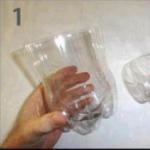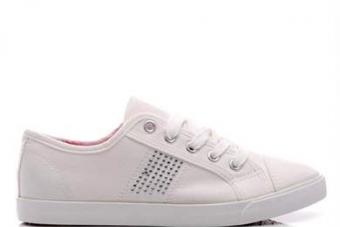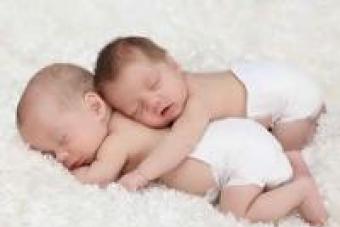Richelieu needlework is also called openwork. It is distinguished by its originality and airiness of patterns. This technique distinguishes between hand embroidery and machine embroidery. It combines several types of seams that are also used in other embroidery techniques. Richelieu embroidery attracts many lovers of needlework with its subtlety and grace.
Basics of Richelieu embroidery
- It is better to choose fabrics from cotton, linen or silk.
- The thickness of the threads should always match the material. For thick fabrics, use thick silk threads, for delicate ones - floss or cotton spool threads.
- Thread colors are matched to the fabric tone. If desired, other colors can be used. Experiments with color must be carried out carefully so as not to spoil the entire product on which the cutwork is performed.
- The pattern is transferred onto the fabric with extreme precision. It is very convenient to use special markers, the lines from which disappear after a few days or from exposure to water.
- The fabric should be lightly washed before use so that it does not shrink in the future.
- Before you start cutting out empty spaces, it is advisable to wash the finished embroidery in the hand wash without spin. The product is dried carefully laid out on a towel and ironed slightly damp.
Watch the video on the topic:
A little about breeding
Brides are connecting elements that strengthen the embroidery. Small patterns with a small number of holes are made without bridging. In other cases, you cannot do without them. The spaces between them should be the same. Breeds can be:
- Simple and with gasket. The latter contain knots and loops, which looks more impressive. There are usually two interlining threads, which are sheathed one at a time, then they are combined.
- Intersecting in the form of a spider.
- Breeds with “twigs”.
Main types of seams in cutwork
Forward needle - performed in the form of simple stitches equal in length to each other and the distance between them;
Satin roller. It is laid in a straight or oblique direction with stitches located next to each other.

The buttonhole stitch is also very simple. The stitches are made strictly vertical to the edge.

Machine cutwork embroidery, the stitch patterns of which include different types of stitches.

This includes the usual straight stitch, “zigzags”, “eights”, “wiggles”, scales and “mound”.
Using only these seams, you can safely begin mastering cutwork patterns.
Simple patterns for Richelieu embroidery for beginners
Floral motifs that are suitable for hand and machine embroidery.


Cutwork embroidery for beginners in the form of simple patterns can be done by any needlewoman with minimal sewing skills.
Geometric and floral details are unusually combined in the designs.


Animals and fruits are also depicted in this technique.

Cutwork embroidery patterns can also be found in the form of monograms.

Openwork sewing is used to make many things. Embroidery is used to decorate blouses, shirts, and skirts, but it especially looks good on wedding dresses.

This type of sewing is used in finishing tablecloths, napkins, bed linen, and curtains. Here are some photos of such works.
This type of openwork embroidery is used for decorating fabric, making decorative items and decorating things. Applicable for both self made, and with the help of a machine. Main principle consists of making an ornament, and then removing parts of the material inside the design. This embroidery pattern for beginners will help you quickly understand the technique.
The basis of the image is an ornament that is repeated in the same order. Most often they work with floral motifs, but there are also animal designs. Sometimes the embroidery is very delicate and original to such an extent that you can see real paintings in it.
First we need to decide what we need the product for.. You can make a napkin, tablecloth, pillows, appliques for things, tulle and much more. Beginning craftswomen who have taken up this business for the first time should focus on a small amount of work, for example, napkins or scarves.
As a result, you will be able to familiarize yourself with the main basics of the technique and get better at it. It is worth remembering that if the embroidery will be a decoration for a tablecloth, or something like that, along the edge, then the image should match and create a frame. The uneven edge on things looks very original.
It is more difficult to create embroidery on clothes, this decoration is quite cute, but it is an important job, if something goes wrong, you will have to redo everything again on sewing machine. Many fashion designers have been using cutwork to decorate their items for a long time. Thin lace adds a weightless effect.
Gallery: cutwork embroidery (25 photos)




















Types of embroidery
There are two methods of embroidery using the cutwork technique:
- Handmade method.
- Machine working method.
Any image and object is suitable for the manual technique, but it will take a lot of time and effort. That's why machine embroidery is more popular.
 To work with a machine, you do not need any complex devices and devices, It is enough to have an ordinary household machine, from which you first need to remove the foot and the teeth that move the material. Additionally, you can insert a special embroidery plate, but this is not necessary. So The cutwork embroidery process is considered free-flowing, that is, the material can be easily moved under the needle.
To work with a machine, you do not need any complex devices and devices, It is enough to have an ordinary household machine, from which you first need to remove the foot and the teeth that move the material. Additionally, you can insert a special embroidery plate, but this is not necessary. So The cutwork embroidery process is considered free-flowing, that is, the material can be easily moved under the needle.
Patterns for cutwork embroidery
Working on a pattern is the main stage in the process of making a product; the quality of the entire volume of the craftswoman’s work depends on the correct choice of image and its transfer to the material.
How to make a cutwork pattern, master class.
 There are many simple ready-made schemes and templates that you can start working on. They are removed from finished items, from magazines and books. However, all these cutwork patterns can easily serve as inspiration for the needlewoman, and for making a new, unusual design with her own hands.
There are many simple ready-made schemes and templates that you can start working on. They are removed from finished items, from magazines and books. However, all these cutwork patterns can easily serve as inspiration for the needlewoman, and for making a new, unusual design with her own hands.
- Embroidery can be on the entire surface of the item, or occupy only one part - a corner, edge, central part. Depending on the location of the embroidery on the item, the density of the material and the purpose of the finished product, an image is selected.
- In most cases, the embroidery pattern includes plant patterns - leaves, flowers, stems, berries, fruits and much more. Almost all details may be similar to real things, or they may be fictitious. Birds and butterflies also appear in the drawings of the craftswomen. And a new look at art offers other patterns, any that the needlewoman finds interesting. Also often the initials of the owner of the item are embroidered on personal items, for example, handkerchiefs.
- The design is depicted on paper using a simple pencil, or you can take a marker; the lighter the outline of the pattern on the stencil, the easier it will be to transfer it to the fabric. You can cut out a couple of different parts and try to make a drawing out of them, changing them in places, conducting experiments. When creating a pattern for embroidery, you must take into account that if the image is located in the center of the item or on the edge, then repeating details, for example, leaves, will look good. If the embroidery is in the center of the item, or on one corner, then it is worth making an accent, for example, in the shape of a large unreal flower.
- You can easily transfer just a particle of the pattern from the finished pattern to a brand new stencil by modifying the details of the pattern - making them more elongated or flat. The combination of the same parts with different locations and with the addition of your own, unusual particles will allow you to make new scheme for a specific contour of the product.
- When transferring a drawing from a finished product onto paper, you can place the item on glass, which is placed above the lamp. Place thin paper on the embroidered material and trace all the black lines with a simple pencil. The second method is to place carbon paper on the finished product, smooth, ink side up, and then tracing paper.
- Next, you need to take a simple, hard, even object (for example, a tablespoon) and start moving it along the surface of the tracing paper. On back side tracing paper, a faint outline of the finished product will begin to appear. After this, you can safely trace the outline with a marker.
This type of openwork cut embroidery is used to decorate fabrics, create decorative items and decorate clothes. Can be used both by hand and by machine. The basic principle is to create a design and then remove sections of fabric within the design. Cutwork embroidery patterns for beginners help you quickly get used to the technique.
The basis of the design is an ornament that is repeated in a certain order. Floral motifs are most often used, but there are also animal images. Sometimes the embroidery is so delicate and unusual that you can see entire paintings in it.

How to choose a scheme?
From the very beginning you need to decide what the product will be used for. This could be a napkin, tablecloth, pillow, clothing applique, tulle, etc. Beginning needlewomen who are taking up this art for the first time should focus on a small piece of work, for example, a napkin or scarf. As a result, you will be able to get acquainted with the basic basics of the work and get better at it. Cutwork embroidery patterns for beginners:




It is worth paying attention that if the embroidery will decorate the tablecloth, or something like that, along the edge, then the design should be appropriate, creating a frame. The uneven edge looks especially interesting.

Patterns for pillows and napkins can be entire works of art, they display various objects and patterns, small sketches and paintings.

It is more difficult to embroider on clothes; such decoration is very beautiful, but it is a responsible job; if something is damaged, you will have to redo the entire product. Fashion designers have long used cutwork to decorate their outfits. Thin lace creates a feeling of weightlessness.



Types of embroidery
There are two ways to embroider using the cutwork technique - manual and machine. Any design and object is suitable for hand embroidery, but it takes a lot of time. Therefore, machine embroidery is the most common.
To embroider using a machine, you do not need any complex devices or devices; it is enough to have the simplest household machine, from which the foot and teeth that move the fabric are first removed. Additionally, you can add a special embroidery plate, but this is not necessary. Thus, the process of cutwork embroidery is free-running, that is, the fabric can be moved freely under the needle.
Preparing the sewing machine for cutwork embroidery:
The main difficulty in machine embroidery is speed. This, of course, speeds up the process, but does not make the job easier for a beginner.
It's okay, the main thing is to regulate the speed correctly, and the result can be truly surprising.
Patterns for cutwork machine embroidery:



Several basic seams
An experienced needlewoman who is taking up cutwork for the first time will not find any new ways of sewing, so no difficulties should arise. But if this is your first experience, it’s worth getting a little familiar with the basic symbols and seams.
Note: Only the image of the drawing will be drawn on the diagram, no symbols, however, the main elements are embroidered with certain types of seams.
Handmade and machine cutwork embroidery differ in the stitches that are used.
Hand stitches:
- “forward needle” and “backward needle” are the simplest seams known to everyone who has ever taken up sewing;


- satin roller - used for embroidering three-dimensional details and consists of a series of stitches, which are then sewn perpendicular and laid in different directions;

- buttonhole stitch - used to process the edge of the design and add volume to the embroidery;

- chain stitch - consists of loops secured with thread in front, used to fill in the details of the pattern;

- “goat” is a cross shifted to the right or left, used to highlight individual details, can be made with colored threads and to fill space;

- stem stitch - well known to lovers of satin stitch and is intended for decorating plant patterns, drawing out veins, stitches are made at an angle constantly, shifting in the desired direction;

Machine seams:
- simple stitch - used to define the outline of the design;
- warp - sewn without fabric in the slots of the pattern, necessary for creating brids (a partition made of tight rollers);
- “mound” - formed if you move the fabric slowly with frequent needle work, used with different types lines to fill in the pattern.

Video of basic seams:
Ready scheme
Since there are no complex conventional images in the embroidery patterns, the design you like can be easily copied from a photo or even a finished product. There is nothing complicated about this process.
To create completely new drawing, you will need separate motifs that are connected and shaped, the result is a unique embroidery pattern. In addition, the modern World Wide Web allows you to find everything you can think of; there are programs for such work. For example, CutWork.
Creating embroidery in the program:
In order for the embroidery to be as accurate as possible and with an even pattern, the pattern is transferred to the fabric using tracing paper. First, they put tracing paper on the drawing and trace it in all the smallest details, then use carbon paper to transfer the image onto the fabric.
Video on the topic of the article
Transferring the pattern to fabric for embroidery:
Some more useful videos:
Delicate, weightless, openwork - this is what cutwork embroidery is called. And it’s hard to argue with this, because it looks more like lace. The best samples occupy a worthy place in the wardrobes of wealthy fashionistas and sometimes cost exorbitant amounts of money. This embroidery is used to decorate bed linen, tablecloths, napkins, collars, cuffs, sleeves, and dress hems.
We have great news - every girl can master this simultaneously difficult and exciting art. All you need is this: patience, perseverance and attentiveness. And your skill will grow with every job completed. They say that Cardinal Richelieu himself free time loved to improve in this technique.
Features of cutwork embroidery
A distinctive feature of cutwork embroidery is that individual parts the pattern needs to be cut out.
Preparatory work
We will tell you in detail how to do it beautiful pattern in this technique.

Decatting of fabric is a process of wet-heat treatment, which eliminates fabric deformation during operation and use of the finished product.
Occasionally you can find fabrics labeled “decated” in stores. But it’s still worth decatifying. To make sure everything is fine.
Embroidery process
Now let's get to work.

The surface can be straight or inclined, with or without flooring. To make the image look more voluminous, you can apply a shadow surface. Threads of similar tones will come in handy for this.

Such embroidery looks very impressive—on clothes—and holiday tablecloths and napkins with cutwork were once in every family.

Cutwork also goes well with others: cross stitches, beads, ribbons, rhinestones.
Cutwork embroidery ideas with patterns
Scheme "Lily"
This cutwork embroidery pattern is ideal for craftswomen who have already mastered it step by step, but are not ready to cut out a lot.
In this embroidery you need to stitch all the lines with a “forward needle” stitch, fill the double contour of the design and the stamen of the flower with satin stitch. Then perform the breeding.

Brides are thread bridges that hold individual parts of the embroidery and prevent it from unraveling.


Schemes of motifs for napkins, scarves
Cutwork embroidery is very good because simple circuits You can arrange it however you like and get original drawings.

From the motifs in the diagram below you can create a magnificent ornament that will decorate a festive tablecloth. And napkins with two or three motifs will complement the ensemble and add zest to the feast.

Floral patterns
Floral motifs look great in patterns. Due to their simplicity, they are equally easy to create either by hand or with a sewing machine. Both an experienced embroiderer and a debutante can quickly handle them.

Such embroidery made with shadow satin stitch will look unusual. That is, the elements will differ in color by several tones. This will complicate the execution, but at the same time add sophistication and even some chic to the product.
Suitable for decorating almost anything: bed and table linen, handbags, scarves.
Embroidery pattern for a sewing machine
A simple cutwork embroidery pattern for working on a sewing machine is ideal for beginning craftswomen. This work is carried out using the classic cutwork technique: stitch all the lines with a simple seam, embroider the necessary elements with satin stitch, make brids, cut holes with sharp scissors close to the edge.
Suitable for napkins. Such products are especially good if they are made with a thread with a slight sheen to match the base.

It is very interesting to combine cutwork embroidery with other techniques.

In this pattern, cutwork is beautifully combined with both voluminous embroidery and even a French knot. After all, the lilac-blue flowers in the box are made exactly in. And the luxurious roses around the window are an example. True, creating such beauty requires remarkable patience and great experience from the needlewoman. The photos perfectly convey all the tenderness and airiness of cutwork embroidery.

Video with master class lessons on cutwork embroidery for beginners
History of needlework. Cutwork embroidery
A fascinating video about the history of cutwork, the technique of execution, and ideas for application. Beautiful, informative and very inspiring.
Cutwork embroidery on a sewing machine
A simple and clear example of cross-cutwork embroidery using basic stitches - roller, beaded stitch, holes. How simple and at the same time elegant this embroidery looks.
Clothes decoration
Master class on cutwork embroidery on clothes. Literally before our eyes, a simple, even nondescript dress turns into a designer outfit. Magic, and that's all.
Tell me, was this article helpful to you? Share your opinion in the comments. This is very important for us.
Weightless openwork, delicate embroidery - all these are integral components of cutwork. Several centuries ago this type handicrafts were incredibly popular. Cutwork embroidery was used to decorate home textiles and clothing. It is no less in demand today. An item decorated with such embroidery invariably attracts admiring glances. Anyone can master the technique, find patterns and show a little perseverance when doing cutwork!
DIY Richelieu: features of technology and choice of materials
This type of embroidery differs from others in that when it is performed, an openwork is created. The fabric is not only decorated with stitches. At the end of the work, the necessary places are carefully cut out with small sharp scissors. In order for the final result to be of high quality, it is worth understanding the cutwork technique. It is equally important to stock up on the right material and other necessary equipment.
Further use of openwork satin stitch depends on the composition and type of fabric. It should not stretch in different directions and deform after washing. Usually natural fibers are chosen for cutwork. Beginner embroiderers should choose cotton or linen of medium thickness. Satin is also suitable. Remember, the thinner the material, the more difficult it will be to work with. The threads may spread to the sides. Therefore, it is better to make cutwork on silk and similar fabrics when you get the hang of it.
It is important to choose threads of the desired tone. Several centuries ago, they usually used colors that matched the fabric. Variations are now allowed. To decorate clothes, you can choose threads 2 shades darker or use contrasting colors. Their composition depends on the type of material. For natural fabrics, cotton or silk threads are usually used.
You will also need standard embroidery needles and small, sharp scissors. It is clear that the cutwork outlines depend on the template. You can use stencils as it. Usually they are transferred to fabric using special markers. It is more convenient to use water-soluble. They use it to draw lines like a regular felt-tip pen. But if you wet a section of the fabric, the design will disappear. With the help of such a marker, the work becomes more accurate.
Some craftswomen do embroidery sewing machine. In this case, you will need to additionally buy soluble and regular flezilin. Additionally, the machine must have an embroidery option.
Cutwork embroidery: photos and step-by-step execution

Before you start embroidering, you need to decate the fabric. This is done so that it does not shrink during subsequent washes. Usually it is lowered into warm water, squeezed out and then dried. Afterwards the material is ironed. Next, they begin to translate the drawing. Most often geometric or floral motifs are used.
You need to look carefully at the lines. The parts of the pattern must be connected to each other. Otherwise, after cutting, the embroidery will simply fall apart into pieces. If the distance between the outlines of the pattern is too large, then at the end of the work the lines can be connected with special bridging parts.
Only the contours on which the stitches will be placed are outlined in the drawing. The canvas is fixed on a hoop so that it does not move. After this, the embroidery begins. Seams are laid along the contour with a needle forward. The main stitches are performed using the satin stitch technique. They can be in the form of flooring, contour or single. It should be remembered that certain details are embroidered in different ways.
Round elements are first performed in a circle, making stitches forward with the needle. Then dense straight or inclined satin stitches are placed on top of them. They can lie one on top of the other. After you complete the entire circle, you need to secure the thread. To do this, the needle is threaded under one of the last stitches. The round element is completed by creating a slot. To do this, make 2 cross-shaped cuts from the center. You should now have “petals”. They are turned up and cut close to the seams.
To make the work look voluminous, some elements are made using the shadow stitch technique. To do this, select threads of the same color, but in different shades. One should be darker than the other. Then the element is marked with stitches. There will be a light part in one part, and a dark part in the other. They are covered with satin stitch. The stitches should be done so that the transition of colors is invisible.

Often you need to do a lot volumetric part. To do this, it is also pre-quilted with the seam forward using a needle. It should be located along the contour and inside it. Then satin stitch embroidery done with covering is placed on top of the stitches.
The embroidery is completed by forming brids. They help connect too large spaces without a pattern. The needle and thread are pulled along the front side between 2 points 2-3 times. The thread should lie tightly on the material without pulling it. It is then sewn with loop stitches. The result is a twisted thin strip. With the help of bridles you can create an openwork mesh, making the embroidery look like lace.
Richelieu: bead embroidery
Sometimes you can find a version of cutwork with beads. It can be done in different ways. At the same time, for each of them it is worth choosing beads of the same caliber. Otherwise, the embroidery will be uneven. The smaller the beads, the denser the pattern will be.
Some needlewomen sew them on in the same way as when making paintings. Invisible punctures are made on the reverse side. One bead fits tightly to the other. In this way, the contours of the pattern are filled. At the end, the necessary parts of the canvas are cut out.
There is another way to create cutwork. Bead embroidery is done in a canopy in pre-cut areas. You can make various patterns or laces, and then carefully attach them to the fabric in the right places. The only thing worth remembering is that this method is more decorative. It is not very suitable for decorating clothes. If the thread breaks, then all the work will go down the drain.

It is much more versatile to stitch the outlines with beads, then make slits. It is best to use cutwork bead embroidery to create openwork overlay collars, jewelry and dress decor.
DIY Richelieu has a number of features:
- The fabric should be cut at the very end. After you have completed the desired areas with satin stitch, wash the embroidery by hand. Don't twist it. To get rid of excess water squeeze lightly with your palms. Let the cutwork dry and iron it. Only after this should you proceed to cutting.
- To make the work look elegant, do it with threads of different shades. This looks especially beautiful on floral patterns.
- To strengthen the contours, a loop stitch is often used. It is placed along the edges and narrow cuts. First you need to make a stitch from left to right. It is not delayed. They simply pierce the fabric with a needle. Then she is taken up. They make a new puncture. The needle is pulled down so that the thread lies underneath it. They pierce the fabric again, but this time at the bottom.
- Finished embroidery requires special care. It can be washed by hand or manually in a machine. In the latter case, it is better to put the fabric in a mesh laundry bag. The embroidery cannot be unscrewed. If it is very wet, it is better to wrap it in a towel, after smoothing it out. When the water is absorbed, iron the damp fabric.
Cutwork embroidery can easily transform clothes, tablecloths and napkins. The patterns are beautiful geometric and floral patterns. Usually embroidery is done on linen, cotton and silk using satin stitch. It fills the contours of the elements. Openwork is obtained due to the fact that at the end of the work, empty spaces are cut out with sharp scissors and the empty spaces are connected with bridges.





